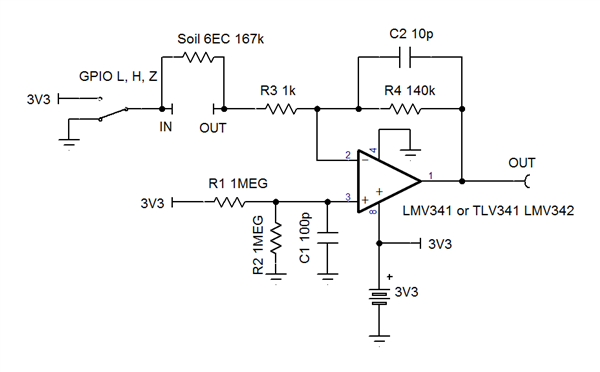Hi All
I have been advised by Victor to make a posting on this forum.
I need to develop a EC circuit that can work conductive probes to measure EC levels in various types of substrates and water.
From my understanding i need to use some form of amp circuit.
And the signal outputted to probes needs to be AC signal.
The AC signal will be a Sine Wave, which i can use the PWM from my micro controller with a possible filter.
As its a AC signal , if i am correct voltage needs to + and -, could i get a circuit running with +-3.3V, so i can power it using batteries?
But when it comes to the amp design i would need some advice on best way to achieve this?
I been also been advised to keep probes 1cm apart.
Does the applied voltage on probes have an effect or correlation to EC levels, for example if 3.3V was applied compared to 12V? What i am asking even though voltage is low, can i have full range of EC represented propositional on my circuit? For example from 0 to 6 EC from 3.3V.
I await for your reply
Thank YOu



